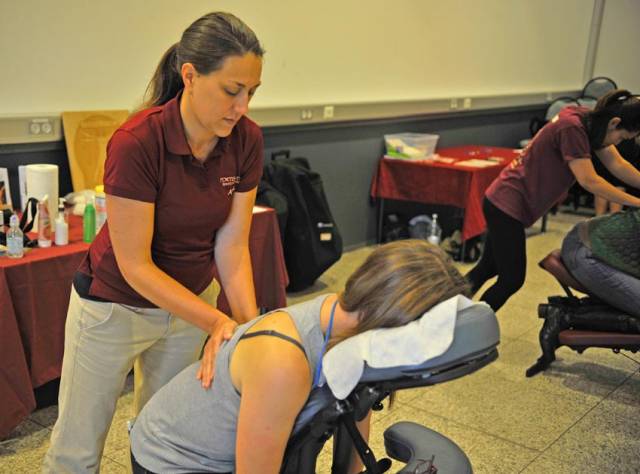In the final instalment of his three-part series, Vendee 2020 Vision solo sailor Andrew Baker emphasises an often neglected but crucial element in training for any performance sailing activity: recovery.
We all can appreciate the importance of training hard. Most of us also understand a healthy diet is beneficial, even down to the micronutrients within the food – the balance of protein, carbohydrates, etc.
However, after all the hours grafting in the gym, training, eating right – all the ‘hard parts’ – very few people take the time, or maybe lack the knowledge, for proper recovery.
You wouldn’t buy a car and simply run it into the ground. You hand it over to a mechanic to maintain, not to mention changing the tyres, oil, bulbs and more. Your body is no different: the more you use your body training, the more you must maintain it.
Some simple practices are to properly warm up before exercise. Do not lift more than you can handle with correct technique; the girls aren’t impressed. Cool down effectively and stretch/move the worked muscles.
From here there is a plethora of different ideas on optimal recovery. Ice baths, heat, compression and acupuncture are all widely publicised and preached. I believe each has its uses, so feel free to experiment with what works for you.
After events or a particularly hard training session, I always use massage to aid recovery. It is also a great way of monitoring your body. If you feel constantly sore or tight in certain places, it can show over training or in a weakness somewhere else that needs attention.
I will have a deep-tissue sports massage but on top of this, I use a foam roller and a lacrosse ball to work on knots, help my posture and relieve any aches before they develop further.
Flexibility
Flexibility can be improved in two ways. Working on one’s stability and ability to perform the correct technique will help prevent you getting tight and losing flexibility, a common issue due to the nature of the movements found in sailing.
I also perform stretches mainly for improving posture, as in offshore racing you sit in static positions for long periods of a time and it’s easy to end up hunched over with rounded shoulders.
On-The-Road Training
Getting exercise in while on the road can be a little harder but not impossible. It requires a bit of improvising and imagination. Tree branches or even kids’ play parks can provide the perfect backup gym - but don’t push the six-year-olds off the monkey bars just so you can do you pull-ups!
Equipment
I always have some simple equipment with me:
- Gymnastic rings are a fantastic piece of equipment and make it possible to perform almost any exercise utilising only your body weight. They are also great for working the smaller stabiliser muscles and moving your body.
- Skipping can be a great way to get in some cardio or HIIT training without always having to go for a run. A skipping rope is small and easy to keep in the bottom of your bag.
Where To Take It From Here?
There are never any excuses not to get fitness training done – we can all do more, myself included. Consistency is key. And the secret to that is to avoid getting bored in the same old workout – have fun and mix it up!
Living an active lifestyle in your spare time can be a great first step towards your fitness goals. A good run along the beach with some body-weight movements while the sun is setting as you wait on the BBQ to light up is hard to beat after a long day on the water. Make it a part of your everyday life and you’ll soon see results in your performance on the waves.
Previously in this series, Andrew Baker wrote about his personal training regimen and making the most of your own gym sessions.






























































